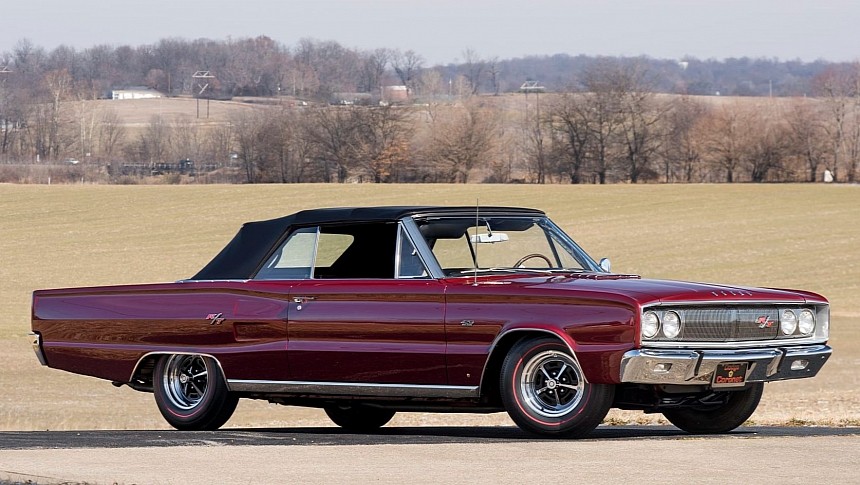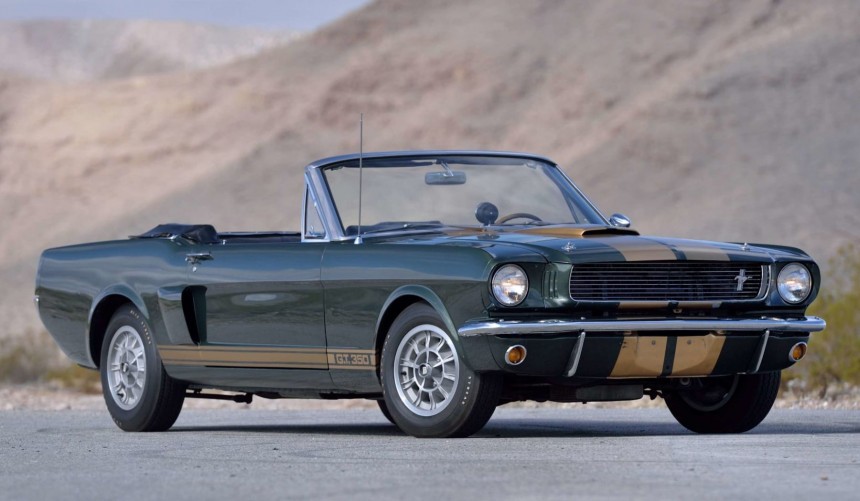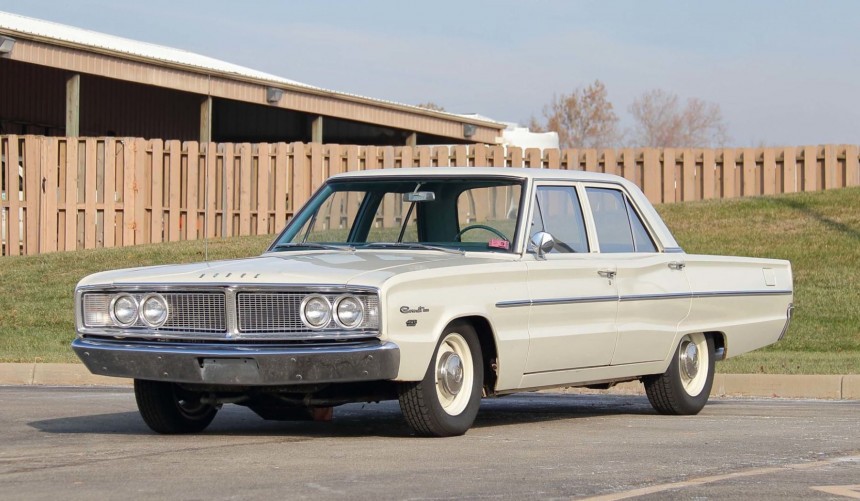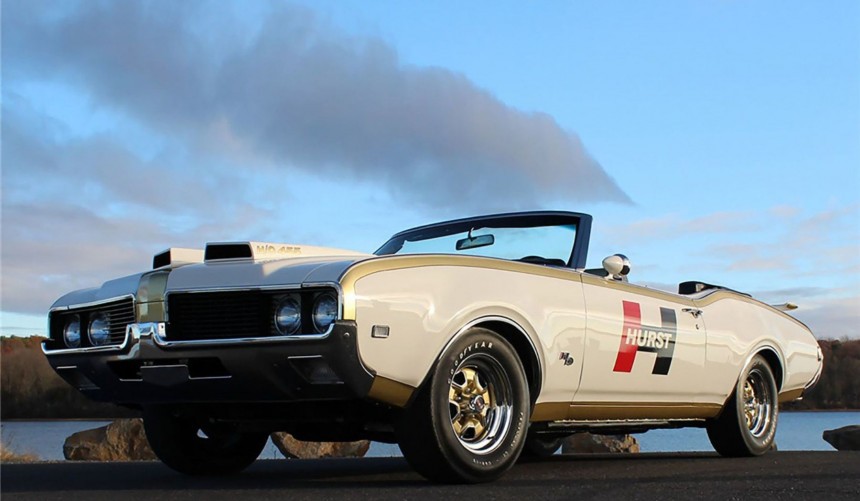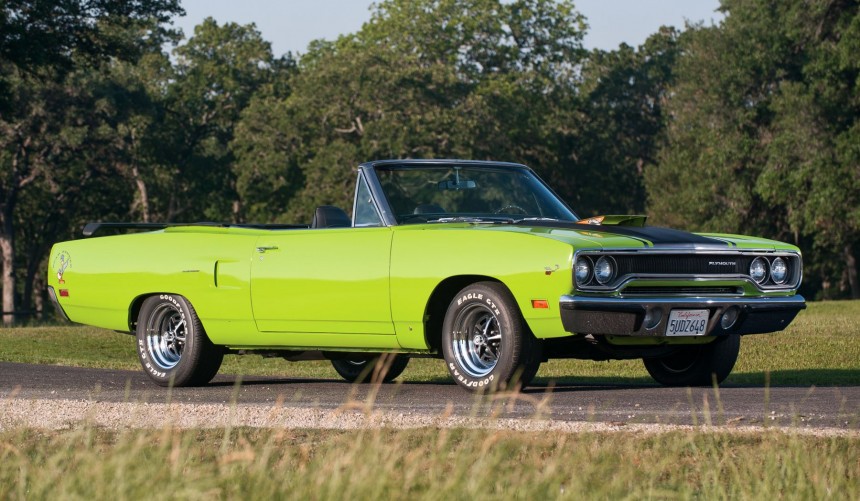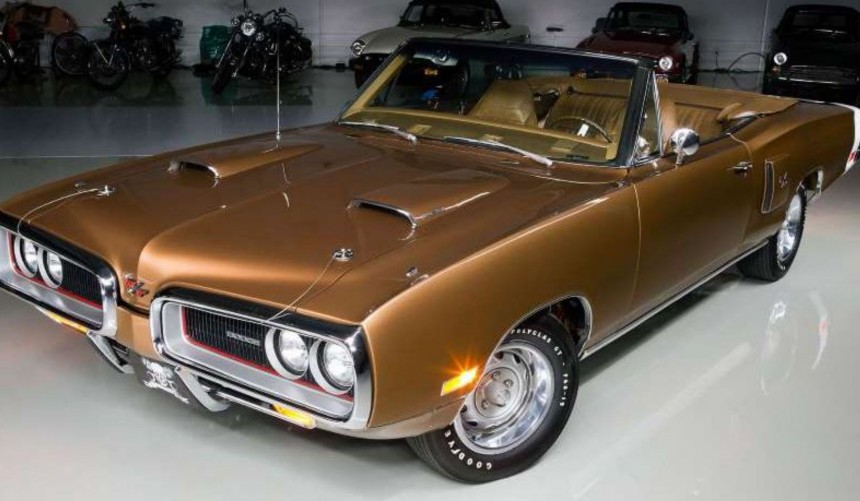Some of the most iconic muscle cars were part of low-volume production runs, but these five take the notion of low-volume production to a whole new level.
During the 1960s and 1970s, US carmakers capitalized on the market's unquenchable thirst for performance by delivering a wide range of beefed-up tire shredding beasts, all based on regular production models.
Many, such as the Ford Torino, Plymouth Road Runner, or Chevrolet Chevelle SS, sold by the tens of thousands during a single model year.
However, some versions of iconic models were produced in very low numbers that didn't exceed seven units during an entire model year.
The first-generation Mustang became one of the most iconic models from the golden age of muscle cars, but initially, it had little to do with performance.
That changed in 1965 when Carroll Shelby and his Venice crew introduced the GT350.
Based on the fastback coupe and named after the distance between the production and race facilities (350 feet), the GT500 received numerous performance upgrades, including a 271-hp HiPo K-Code version of the Windsor 289.
Initially, Shelby didn't plan to produce a convertible version, but legend has it that a celebrity client and close friend convinced the Texan to do it.
The story goes that Bob Shane, a member of the pop group The Kingston Trio, remarked during a conversation with Shelby that if a convertible GT350 would be introduced in 1966, he would be the first to buy it.
A few months later, Shelby - who apparently took that remark as a firm order - called Shane and invited him to pick up his convertible from the Venice shop.
Apart from Shane's car, Shelby built five more GT350 convertibles in 1966. Two years later, the body style returned as part of a larger production run of drop-top GT350s and GT500s
By the strict definition, a muscle car is an American-made, two-door performance model boasting a potent V8. Nevertheless, the current Dodge Charger introduced in 2005 proved that a four-door version can make the cut.
Contrary to popular belief, the modern charger wasn't the first four-door muscle car ever produced by Dodge.
During the 1966 model year, Dodge and Plymouth added the street version of the NASCAR-bound 426 HEMI engine.
Conservatively rated at 425 hp, the engine was initially available on four intermediate models - all with two-door bodies.
However, some influential customers convinced their dealers to order HEMI-powered Coronet Deluxe sedans.
Only five were built in 1966, and one of them, which survived with few miles on the odometer, became one of the most expensive 426 HEMI-powered cars ever sold at a public auction.
Apart from producing OEM shifters for nearly all the muscle cars of the golden age, Hurst Performance also helped develop a series of drag strip and street models.
Arguably, the most famous example was the Hurst/Olds, which debuted in 1968.
The ultimate high-performance weapon in Oldsmobile's arsenal, this model became the only GM intermediate to feature a V8 larger than 400 ci (6.5 liters), as the collaboration with Hurst allowed the division to bypass GM's self-imposed ban.
During the initial 1968-1969 production run, the Hurst/Olds was only available in fastback coupe guise.
Nevertheless, in 1969, Hurst converted three 442 convertibles to Hurst/Olds specifications for promotional purposes.
Powered by the same 380-hp 455-ci (7.4-liter) Rocket V8 and doing the same modifications as the regular Hurst/Olds cars, the first was built for East Coast events and the second for corporate engagements on the West Coast.
Unfortunately, the East Coast car was damaged beyond repair in an accident, and a third convertible had to be built. Both drop-top cars have survived and are currently part of private collections.
For the 1968 model year, Plymouth expanded its muscle car lineup with the Road Runner. Based on the Belvedere, it was conceived to give performance enthusiasts a budget-friendly alternative to the GTX.
The Chrysler division hoped it could sell up to 20,000 units that year, yet the model became a hit, and Plymouth ended up selling more than twice as many.
Available with a standard 335-hp 383-ci (6.3-liter) V8, the Road Runner could also be optionally equipped with the mighty 426 HEMI.
For 1969, changes included a visual makeover, the addition of a 390-hp 440 Six-Barrel, and the ability to order the Road Runner as a convertible.
Much like the HEMI-equipped cars, the rag-top Road Runner was a tough sell, with only 2,128 of the 80,000+ units being sold in that body style.
The convertible option returned for 1970, but with sales failing to reach a mere 900 units, it was dropped after the model year ended.
Of the 834 convertibles built during that model year, only three were factory-equipped with the HEMI, which makes the 1970 Road Runner HEMI Convertible the rarest muscle car ever produced by Plymouth.
Some of the rarest, most highly-valued muscle cars of the 1960s and 1970s are HEMI-powered convertibles produced by Plymouth and Dodge.
While the 1970 and 1971 drop-top HEMI 'Cudas are currently the most expensive classic muscle cars on the planet, they are not the rarest.
That title goes to the convertible Dodge Coronet R/T HEMI of 1967 and 1970.
The fifth-generation Coronet and its Plymouth Belvedere sibling received a major redesign in 1968. While the Coronet-based Super Bee became Dodge's answer to the Road Runner, the Coronet R/T was the range's two-door-only muscle car trim, similar to the GTX.
Sold only as a hardtop or convertible, the R/T was available with either the standard 440 Magnum or the 426 HEMI.
The vast majority of R/T HEMIs were sold in hardtop guise, while the convertibles equipped with the Elephant recorded the lowest production numbers in Dodge's history.
The record of two units per model year was first reached in 1967 and repeated in 1970.
Many, such as the Ford Torino, Plymouth Road Runner, or Chevrolet Chevelle SS, sold by the tens of thousands during a single model year.
However, some versions of iconic models were produced in very low numbers that didn't exceed seven units during an entire model year.
1966 Shelby GT350 Convertible - 6 units
That changed in 1965 when Carroll Shelby and his Venice crew introduced the GT350.
Based on the fastback coupe and named after the distance between the production and race facilities (350 feet), the GT500 received numerous performance upgrades, including a 271-hp HiPo K-Code version of the Windsor 289.
Initially, Shelby didn't plan to produce a convertible version, but legend has it that a celebrity client and close friend convinced the Texan to do it.
The story goes that Bob Shane, a member of the pop group The Kingston Trio, remarked during a conversation with Shelby that if a convertible GT350 would be introduced in 1966, he would be the first to buy it.
A few months later, Shelby - who apparently took that remark as a firm order - called Shane and invited him to pick up his convertible from the Venice shop.
Apart from Shane's car, Shelby built five more GT350 convertibles in 1966. Two years later, the body style returned as part of a larger production run of drop-top GT350s and GT500s
1966 Dodge Coronet HEMI Sedan – 5 units
Contrary to popular belief, the modern charger wasn't the first four-door muscle car ever produced by Dodge.
During the 1966 model year, Dodge and Plymouth added the street version of the NASCAR-bound 426 HEMI engine.
Conservatively rated at 425 hp, the engine was initially available on four intermediate models - all with two-door bodies.
However, some influential customers convinced their dealers to order HEMI-powered Coronet Deluxe sedans.
Only five were built in 1966, and one of them, which survived with few miles on the odometer, became one of the most expensive 426 HEMI-powered cars ever sold at a public auction.
1969 Hurst/Olds Convertible – 3 units
Arguably, the most famous example was the Hurst/Olds, which debuted in 1968.
The ultimate high-performance weapon in Oldsmobile's arsenal, this model became the only GM intermediate to feature a V8 larger than 400 ci (6.5 liters), as the collaboration with Hurst allowed the division to bypass GM's self-imposed ban.
During the initial 1968-1969 production run, the Hurst/Olds was only available in fastback coupe guise.
Nevertheless, in 1969, Hurst converted three 442 convertibles to Hurst/Olds specifications for promotional purposes.
Powered by the same 380-hp 455-ci (7.4-liter) Rocket V8 and doing the same modifications as the regular Hurst/Olds cars, the first was built for East Coast events and the second for corporate engagements on the West Coast.
Unfortunately, the East Coast car was damaged beyond repair in an accident, and a third convertible had to be built. Both drop-top cars have survived and are currently part of private collections.
1970 Plymouth Road Runner HEMI Convertible – 3 units
The Chrysler division hoped it could sell up to 20,000 units that year, yet the model became a hit, and Plymouth ended up selling more than twice as many.
Available with a standard 335-hp 383-ci (6.3-liter) V8, the Road Runner could also be optionally equipped with the mighty 426 HEMI.
For 1969, changes included a visual makeover, the addition of a 390-hp 440 Six-Barrel, and the ability to order the Road Runner as a convertible.
Much like the HEMI-equipped cars, the rag-top Road Runner was a tough sell, with only 2,128 of the 80,000+ units being sold in that body style.
The convertible option returned for 1970, but with sales failing to reach a mere 900 units, it was dropped after the model year ended.
Of the 834 convertibles built during that model year, only three were factory-equipped with the HEMI, which makes the 1970 Road Runner HEMI Convertible the rarest muscle car ever produced by Plymouth.
1967 & 1970 Dodge Coronet R/T HEMI Convertible – 2 units
While the 1970 and 1971 drop-top HEMI 'Cudas are currently the most expensive classic muscle cars on the planet, they are not the rarest.
That title goes to the convertible Dodge Coronet R/T HEMI of 1967 and 1970.
The fifth-generation Coronet and its Plymouth Belvedere sibling received a major redesign in 1968. While the Coronet-based Super Bee became Dodge's answer to the Road Runner, the Coronet R/T was the range's two-door-only muscle car trim, similar to the GTX.
Sold only as a hardtop or convertible, the R/T was available with either the standard 440 Magnum or the 426 HEMI.
The vast majority of R/T HEMIs were sold in hardtop guise, while the convertibles equipped with the Elephant recorded the lowest production numbers in Dodge's history.
The record of two units per model year was first reached in 1967 and repeated in 1970.
